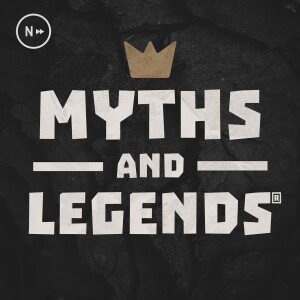

The Family Crucible is a book written by Augustus Y. Napier and Carl A. Whitaker that explores the dynamics of family relationships and the impact that individual family members can have on each other. The authors use case studies and therapeutic techniques to illustrate how families can work through conflicts and strengthen their bonds. This book is aimed at individuals interested in psychology, family therapy, and personal growth.
Chapter 2 Is A Book The Family Crucible recommended for reading?"The Family Crucible" by Augustus Y. Napier and Carl A. Whitaker is considered a classic in the field of family therapy. It provides an in-depth exploration of family dynamics and offers valuable insights into how families can navigate challenges and conflicts. Many readers have found the book to be helpful in understanding their own family dynamics and improving communication within their families. Overall, "The Family Crucible" is highly recommended for those interested in family therapy and psychology.
Chapter 3 A Book The Family Crucible Summary"The Family Crucible" is a groundbreaking book written by psychologists Augustus Y. Napier and Carl A. Whitaker that explores the dynamics of family therapy and the impact of family interactions on individual development. The book follows the case study of a dysfunctional family, the Brice family, as they undergo therapy with Napier and Whitaker.
The Brice family consists of parents Carolyn and David, as well as their three children: Claudia, Don, and Laura. The family is struggling with a wide range of issues, including communication breakdowns, parenting conflicts, and emotional distance. Throughout the therapy sessions, Napier and Whitaker work with the family to uncover underlying tensions and patterns that are contributing to their dysfunctional dynamics.
The therapists challenge the family members to confront their beliefs, assumptions, and fears, in order to break free from destructive patterns of behavior. Through a series of intense and emotional sessions, the Brice family members begin to explore their own emotional wounds and vulnerabilities, leading to greater understanding, empathy, and growth.
"The Family Crucible" offers valuable insights into the power of family systems theory and the importance of addressing underlying dynamics in order to create lasting change. The book emphasizes the idea that each family member plays a role in the overall functioning of the family unit, and that healing and growth can only occur when these roles are examined and altered.
Overall, "The Family Crucible" is a thought-provoking and insightful look at the complex nature of family relationships and the transformative potential of family therapy. It serves as a valuable resource for psychologists, therapists, and anyone interested in understanding the impact of family dynamics on individual well-being.
Chapter 4 Meet the Writer of A Book The Family CrucibleThe book "The Family Crucible" was co-authored by Augustus Y. Napier and Carl A. Whitaker. It was first published in 1978.
Augustus Y. Napier has also written several other books, including "Recreating Your Self" and "The Fragile Bond". "The Family Crucible" is arguably his most well-known work and has received multiple editions.
Carl A. Whitaker was a renowned psychiatrist and family therapist who has contributed greatly to the field. He has co-authored several other books as well, such as "Symbolic Experiential Family Therapy" and "Dancing with the Family".
Overall, "The Family Crucible" is considered the most significant and influential work by both authors, as it explores the dynamics of family therapy in a deeply insightful manner.
Chapter 5 A Book The Family Crucible Meaning & Theme A Book The Family Crucible MeaningThe Family Crucible is a book written by therapists Augustus Y. Napier and Carl A. Whitaker that explores the dynamics of family relationships and the ways in which family members can either support or hinder each other's growth and development. The title of the book refers to the metaphor of a crucible, a container in which metals are melted and transformed, symbolizing the intense emotional and psychological pressures that families face as they navigate challenges and conflicts together.
The central theme of the book is the idea that families are complex systems in which the actions and feelings of each member are interconnected and deeply influenced by the dynamics of the group as a whole. The authors argue that in order for families to flourish and individuals to achieve their full potential, it is essential for family members to communicate openly and honestly, express their emotions, and work together to resolve conflicts in a healthy and constructive manner.
Through case studies and vignettes from their own therapy practice, Napier and Whitaker illustrate the power of therapy in helping families confront their difficulties and create positive change. By providing insight into the ways in which families can heal and grow stronger together, The Family Crucible offers readers a roadmap for understanding and improving their own family relationships.
A Book The Family Crucible ThemeThe theme of "The Family Crucible" centers on the complexities and struggles within families and the impact they have on individual members. The book explores how family dynamics, communication patterns, and unresolved issues can create conflict and tension within a family. It emphasizes the importance of understanding and addressing these underlying issues in order to foster healthier relationships and promote growth and healing within the family unit. Additionally, the book highlights the idea that confronting and working through these challenges can lead to greater self-awareness, personal development, and ultimately, stronger familial bonds.
Chapter 6 Various Alternate Resources- Amazon: The Family Crucible by Augustus Y Napier and Carl A Whitaker is available for purchase in various formats on Amazon.com.
- Goodreads: Find reviews, ratings, and discussions about The Family Crucible on Goodreads.com.
- Wikipedia: Learn more about the authors, Augustus Y Napier and Carl A Whitaker, and their work on the Wikipedia page for The Family Crucible.
- Google Books: Preview sections of The Family Crucible and explore related books and resources on Google Books.
- YouTube: Watch videos of interviews and discussions about The Family Crucible on YouTube.
- Barnes & Noble: Purchase The Family Crucible online or find a local store where you can buy the book on Barnesandnoble.com.
- Audible: Listen to an audio version of The Family Crucible on Audible.com.
- Twitter: Follow hashtags related to The Family Crucible for updates and discussions on Twitter.
- Instagram: Explore photos and quotes related to The Family Crucible by searching for the book's hashtag on Instagram.
- Podcasts: Listen to episodes of podcasts that discuss The Family Crucible and related topics on platforms like Spotify or Apple Podcasts.
A Book The Family Crucible quotes as follows:
- "Families become sick and develop symptoms when they are unable to find a way to balance the struggle between individuality and togetherness."
- "The key is to create an environment in which each individual family member feels free to express their thoughts and emotions without fear of judgment or rejection."
- "Family therapy is not about blaming one person for the problems of the family, but rather about exploring and understanding the dynamics that are causing dysfunction."
- "Change in a family is not easy, but it is necessary for growth and healing to occur."
- "It is important for families to learn how to communicate effectively and resolve conflicts in a healthy manner."
- "Every family has its own unique set of struggles, but with willingness and effort, they can overcome them together."
- "The first step in healing a family is acknowledging that there is a problem and being open to seeking help."
- "Listening and understanding each other's perspectives is crucial in building trust and connection within a family."
- "Family therapy provides a safe space for families to work through their issues and develop healthier ways of relating to one another."
- "Ultimately, the goal of family therapy is to strengthen the bonds between family members and create a more fulfilling and harmonious family life."
- "Running on Empty: Overcome Your Childhood Emotional Neglect" by Jonice Webb - This book delves into the impact of emotional neglect on individuals and offers strategies for healing and moving forward.
- "The Gifts of Imperfection: Let Go of Who You Think You're Supposed to Be and Embrace Who You Are" by Brené Brown - Brené Brown explores the power of vulnerability and the importance of self-acceptance in this insightful and empowering book.
- "The Four Agreements: A Practical Guide to Personal Freedom" by Don Miguel Ruiz - This book offers a simple yet powerful code of conduct based on ancient Toltec wisdom, helping readers free themselves from self-limiting beliefs and live a more fulfilling life.
- "Daring Greatly: How the Courage to Be Vulnerable Transforms the Way We Live, Love, Parent, and Lead" by Brené Brown - In this book, Brené Brown explores the role of vulnerability in our lives and how embracing it can lead to greater connection, courage, and authenticity.
- "The Body Keeps the Score: Brain, Mind, and Body in the Healing of Trauma" by Bessel van der Kolk - This book examines the impact of trauma on the body and brain, offering insights into how trauma affects our lives and providing strategies for healing and recovery.
More Episodes
All Episodes>>Create Your Podcast In Minutes
- Full-featured podcast site
- Unlimited storage and bandwidth
- Comprehensive podcast stats
- Distribute to Apple Podcasts, Spotify, and more
- Make money with your podcast












